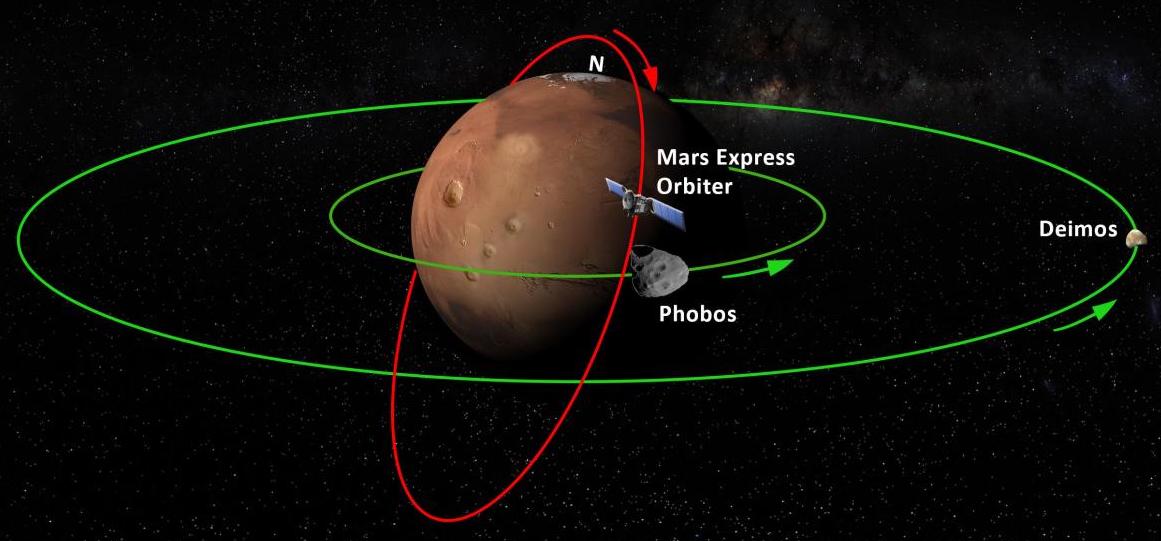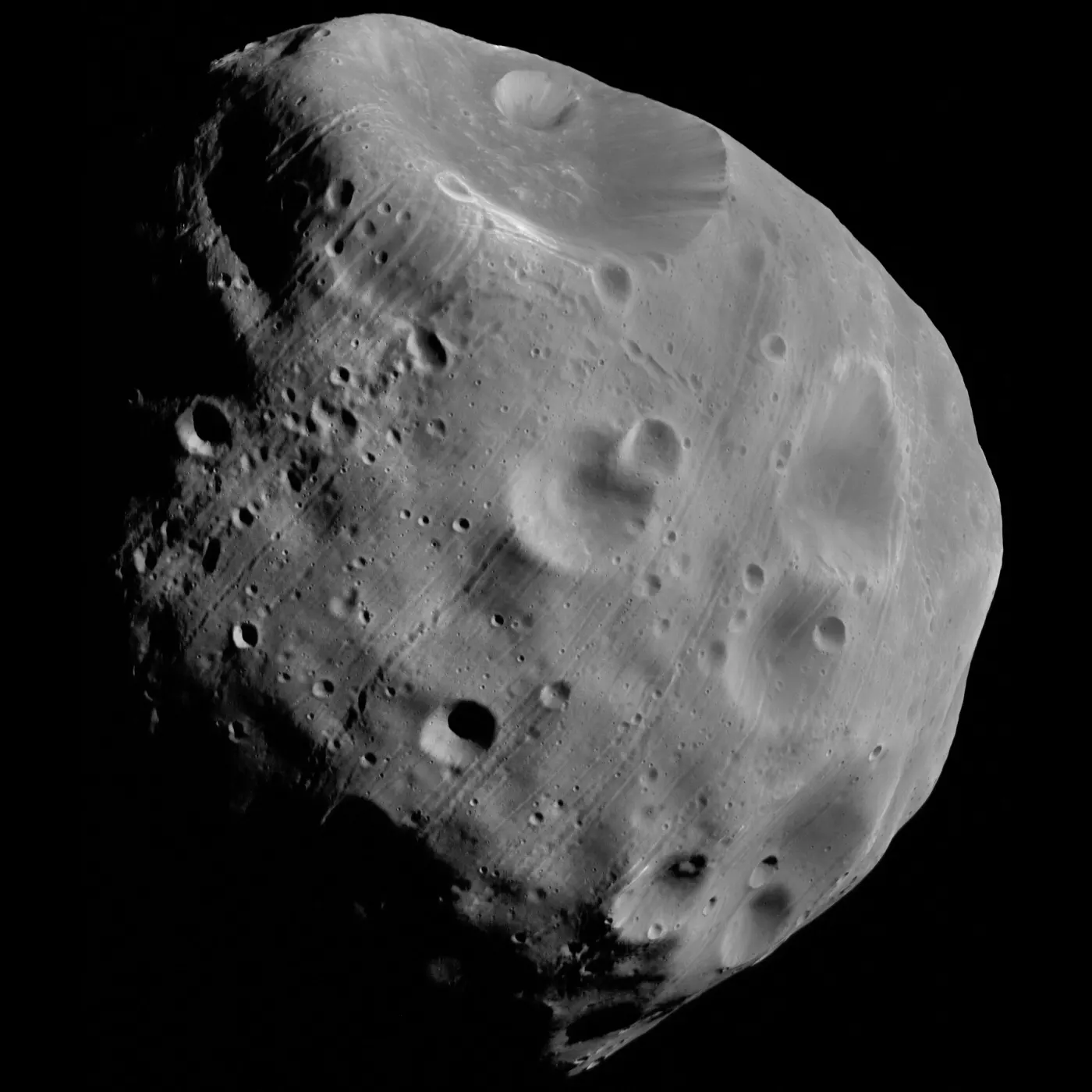Mars Moons
The Red Planet has two satellites in its orbit. The innermost satellite is “Phobos”, named after the Greek god of Horror. And the outermost satellite is “Deimos” and is named after the Greek god of Terror.

The surfaces of both of Mars’ moons are dented with craters. Their low gravity keeps the satellites from forming into a spheres and instead they are both elongated irregular shaped objects, similar to asteroids.
Deimos and Phobos are some of the smallest satellites in the solar system and their origins are highly speculated. Even their composition is not entirely certain.
Phobos

Phobos is the larger of Mars’ two satellites (14 miles across at the widest) but is still very small compared to most satellites in the solar system. At first glance at the moon an obvious crater stands out. This is Stickney, a 5.6 mile wide crater probably formed when a slightly smaller body slammed into the satellite.
Phobos is closer to Mars than Deimos and is actually getting gradually closer and closer to Mars. It is predicted that the moon will crash into the surface of Mars in the next 50 million years if it does not break up before then.
Deimos
Deimos is the smaller of the two moons at about 8 miles across. It is 14,500 miles from Mars and its orbital period lasts more than an Earth day. While Phobos is gradually being pulled in by Mars’ gravity, Deimos is drifting away from Mars.
Deimos has fewer and smaller craters than its brother Phobos. The two most notable craters are named Voltaire and Swift and can be seen in the image above. Like Phobos, Deimos is thought to be a C or D type asteroid based on what we can see from Earth and the evidence returned from various fly-by missions. But we would need an actual soil sample in order to know for sure the origins of the moons.
| Object | Diameter (miles) | Gravity (m/s^2) | Composition |
|---|---|---|---|
| Earth | 7926 | 9.8 | Rock, Water |
| Mars | 4220 | 3.71 | Rock, Water |
| Moon | 2159 | 1.62 | Rock |
| Phobos | 14 | 0.0057 | Rock (?) |
| Deimos | 8 | 0.003 | Rock, Water (?) |